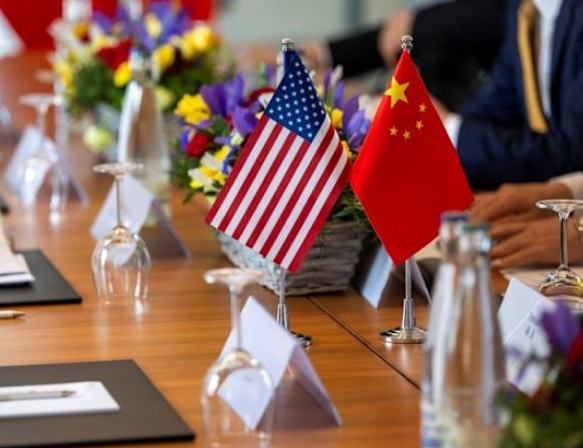A fragile tariff truce between the United States and China continues to hold, offering a temporary reprieve in the ongoing trade tensions between the world’s two largest economies. However, the future of this détente remains uncertain, as U.S. officials have made it clear that President Donald Trump, a key architect of the initial trade war, retains the ultimate authority to decide on its extension or termination. This development underscores the enduring influence of Trump’s trade policies and the potential for a swift shift in the global economic landscape.
The current pause in tariffs, while welcomed by businesses and consumers on both sides, comes after intense negotiations that reportedly yielded no major breakthroughs. The focus now shifts to the former President, whose past actions have demonstrated a willingness to employ tariffs as a primary tool in international trade disputes. This article will delve into the current state of the truce, the historical context of the US-China trade war, and the implications of Trump’s continued sway over this critical economic relationship.
The Current Truce: A Precarious Pause
The recent discussions between U.S. and Chinese officials in Stockholm concluded without significant breakthroughs, leaving the existing tariff truce in a state of precarious balance. While both sides have expressed a desire to continue dialogue, the lack of a definitive agreement means the truce’s continuation hinges on a decision from former President Donald Trump. Treasury Secretary Scott Bessent explicitly stated that Trump “has final say on all the trade deals” and the pending tariff truce .
This situation highlights the unique position Trump holds, in shaping U.S. trade policy. His administration initiated the trade war with China, imposing tariffs on hundreds of billions of dollars worth of Chinese goods, citing unfair trade practices and intellectual property theft. China retaliated with its own tariffs, leading to a prolonged period of economic uncertainty and disruption for global supply chains.
The current truce, therefore, is not a resolution but rather a temporary cessation of hostilities. Businesses and industries that have been impacted by the tariffs are closely watching for any indication of Trump’s decision, as a renewal of the trade war could have significant economic repercussions. The ongoing negotiations are aimed at finding common ground, but the ultimate fate of the truce rests with a single individual who has consistently demonstrated a willingness to use tariffs as a strategic leverage point.
The Implications of Trump’s Final Say
The fact that President Trump holds the “final say” on the continuation of the tariff truce introduces a significant element of uncertainty into global trade. His past actions have demonstrated a clear preference for using tariffs as a tool to achieve specific trade objectives, often outside traditional multilateral frameworks. This approach, while lauded by some as a strong stance against unfair trade practices, has also been criticized for disrupting global supply chains and increasing costs for businesses and consumers.
Should Trump decide to terminate the truce and re-escalate tariffs, the economic consequences could be substantial. Businesses that have adjusted to the current tariff environment would face renewed uncertainty, potentially leading to increased costs, reduced profits, and disruptions in their operations. Furthermore, a renewed trade war could exacerbate existing global economic challenges and impact international relations beyond trade.
Conversely, if Trump chooses to extend the truce, it could provide a period of stability, allowing for further negotiations and potentially a more comprehensive trade agreement. However, even an extension would likely be viewed through the lens of his past policies, with the understanding that the threat of renewed tariffs could resurface at any time. This ongoing uncertainty makes long-term planning difficult for businesses and creates a volatile environment for investors.
Ultimately, Trump’s decision will be a critical factor in determining the trajectory of US-China trade relations. His past rhetoric and actions suggest a continued focus on what he perceives as American economic interests, and his willingness to employ aggressive tactics to achieve those goals. The world watches to see whether the current calm will endure or if the trade winds will once again shift dramatically.



